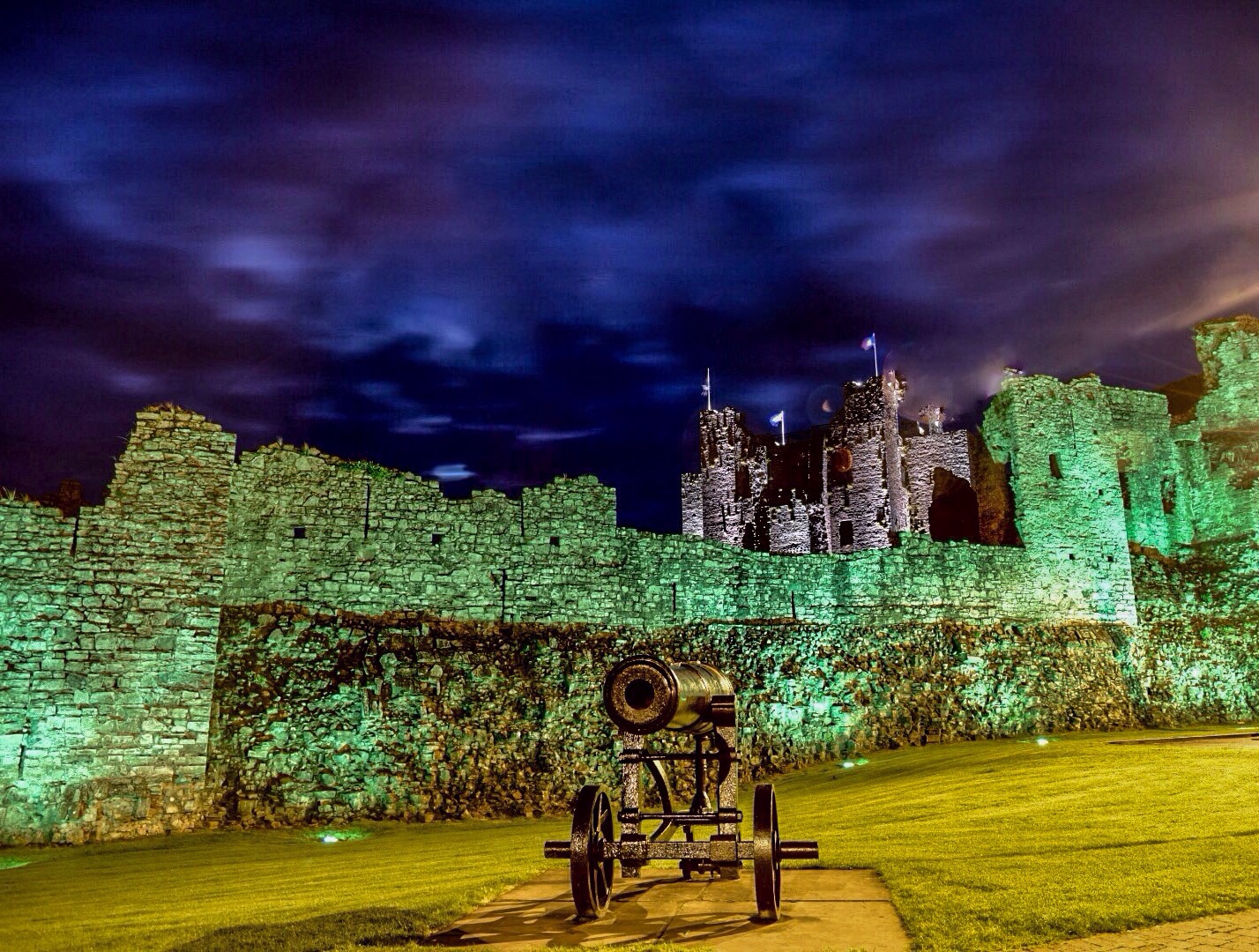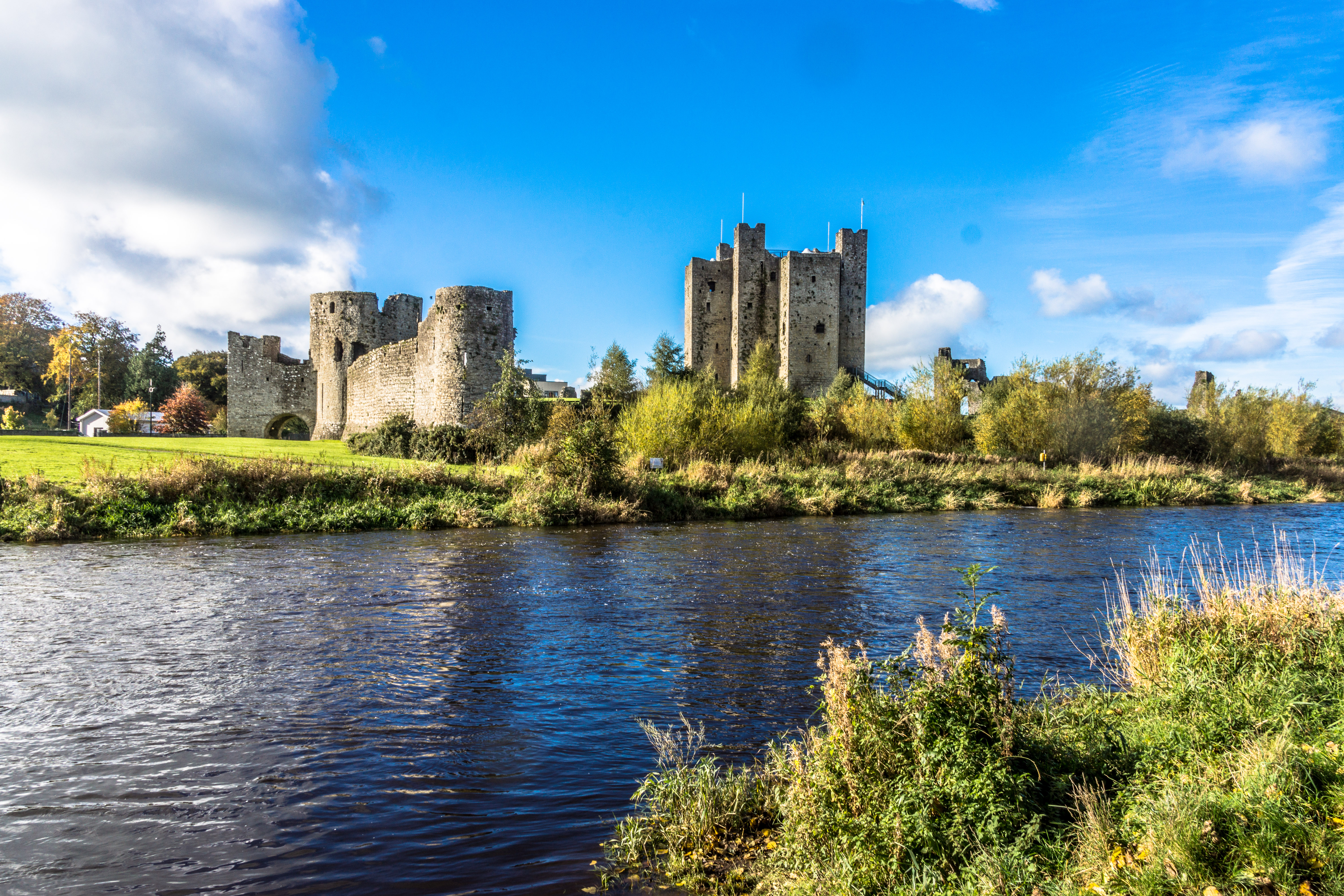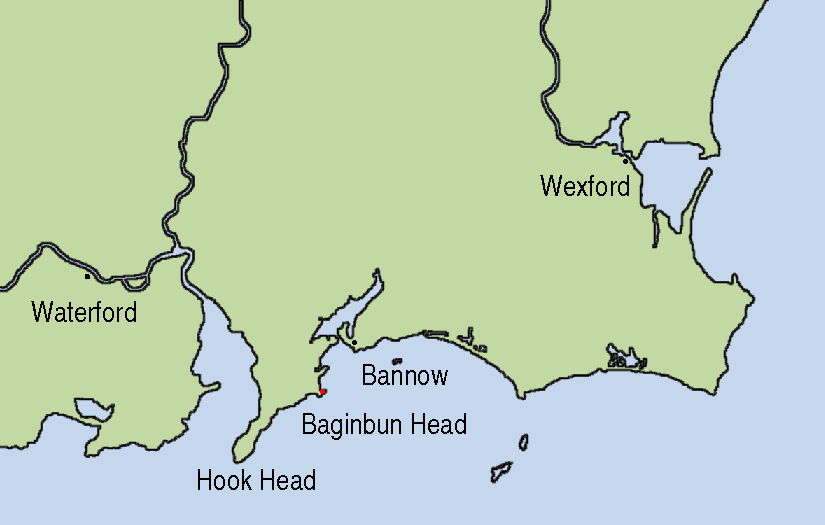|
Trim Castle
Trim Castle ( ga, Caisleán Bhaile Átha Troim) is a castle on the south bank of the River Boyne in Trim, County Meath, Ireland, with an area of 30,000 m2. Over a period of 30 years, it was built by Hugh de Lacy, Lord of Meath, Hugh de Lacy and his son Walter de Lacy, Lord of Meath, Walter as the ''caput'' of the Lordship of Meath. The Government of Ireland, Irish Government currently own and are in charge of the care of the castle, through the state agency The Office of Public Works (OPW). The castle is on the List of National Monuments in County Meath. History De Lacy The land area of Meath was owned by the church but was granted to Hugh de Lacy, Lord of Meath, Hugh de Lacy in 1172 by Henry II of England as one of the new administrative areas. De Lacy built a huge ringwork castle defended by a stout double palisade and external ditch on top of the hill. There may also have been further defences around the cliffs fringing the high ground. Part of a stone footed timber ... [...More Info...] [...Related Items...] OR: [Wikipedia] [Google] [Baidu] |
Trim, County Meath
Trim () is a town in County Meath, Ireland. It is situated on the River Boyne and has a population of 9,194. The town is noted for Trim Castle – the largest Norman castle in Ireland. One of the two cathedrals of the United Dioceses of Meath and Kildare — St Patrick's cathedral — is located north of the river. Trim won the Irish Tidy Towns Competition in 1972, 1984, 2014 and 2022, and was the "joint" winner with Ballyconnell in 1974. Trim was historically the county town of Meath, but this title was passed on in 1898 to the larger, neighbouring town of Navan. History Early history At an early date, a monastery was founded at Trim, which lay within the petty kingdom ('' tuath'') of the Cenél Lóegairi. It is traditionally thought to have been founded by St. Patrick and left in the care of its patron saint Lommán, also locally known as Loman, who flourished sometime between the 5th and early 6th centuries.Stalmans and Charles-Edwards, "Meath, saints of (act. ''c''.4 ... [...More Info...] [...Related Items...] OR: [Wikipedia] [Google] [Baidu] |
The Song Of Dermot And The Earl
''The Song of Dermot and the Earl'' (french: Chanson de Dermot et du comte) is an anonymous Anglo-Norman verse chronicle written in the early 13th century in England. It tells of the arrival of Richard de Clare (Strongbow) in Ireland in 1170 (the "earl" in the title), and of the subsequent arrival of Henry II of England. The poem mentions one Morice Regan, secretary to Dairmaid mac Murchadha, king of Leinster, who was eyewitness to the events and may have provided an account to the author. The chronicle survives only in a single manuscript which was re-discovered in the 17th century in London. The work bears no title in the manuscript, but has been commonly referred to as ''The Song of Dermot and the Earl'' since Goddard Henry Orpen in 1892 published a diplomatic edition under this title. It has also been known as The Conquest of Ireland and The Conquest of Ireland by Henry II; in the most recent edition it was called La Geste des Engleis en Yrlande ("The Deeds of the English in ... [...More Info...] [...Related Items...] OR: [Wikipedia] [Google] [Baidu] |
Joan Of Lusignan
Joan of Lusignan (1260 – 13 April 1323) was a French noblewoman. She succeeded her uncle, Guy de la Marche, Knight, sometime in the period, 1310/13, as Lady of Couche and Peyrat, but not as Countess of La Marche since after her sister, Yolande's death, it was annexed by Philip IV of France and given as an appanage to Philip's son Charles the Fair. Previously, in 1308, following the death of her brother Guy (or Guiard), Jeanne and her sister Isabelle, as co-heiresses, had sold the county of Angoulême to the King. She was married twice. Her first husband was Bernard Ezi III, Lord of Albret, by whom she had two daughters. By her second husband Sir Piers de Geneville, she had another three daughters; the eldest of whom was Joan de Geneville, 2nd Baroness Geneville, wife of Roger Mortimer, 1st Earl of March, the ''de facto'' ruler of England from 1327 to 1330. She is sometimes referred to as Jeanne of Lusignan. Family Joan was a younger daughter of Hugh XII of Lusignan, Co ... [...More Info...] [...Related Items...] OR: [Wikipedia] [Google] [Baidu] |
Champagne (historical Province)
Champagne () was a province in the northeast of the Kingdom of France, now best known as the Champagne wine region for the sparkling white wine that bears its name in modern-day France. The County of Champagne, descended from the early medieval kingdom of Austrasia, passed to the French crown in 1314. Formerly ruled by the counts of Champagne, its western edge is about 160 km (100 miles) east of Paris. The cities of Troyes, Reims, and Épernay are the commercial centers of the area. In 1956, most of Champagne became part of the French administrative region of Champagne-Ardenne, which comprised four departments: Ardennes, Aube, Haute-Marne, and Marne. From 1 January 2016, Champagne-Ardenne merged with the adjoining regions of Alsace and Lorraine to form the new region of Grand Est. Etymology The name ''Champagne'', formerly written ''Champaigne'', comes from French meaning "open country" (suited to military maneuvers) and from Latin ''campanius'' meaning "level country ... [...More Info...] [...Related Items...] OR: [Wikipedia] [Google] [Baidu] |
Vaucouleurs
Vaucouleurs () is a commune in the Meuse department, northeastern France. It is situated on the river Meuse, approximately from Toul and Commercy. History Geoffrey de Geneville, 1st Baron Geneville (1225/33 – 21 October 1314) also known as Geoffrey de Joinville, was an Anglo-French noble, supporter of Henry III, who appointed him Baron of Trim, County Meath, Ireland. Geoffrey de Geneville was Seigneur of Vaucouleurs in Champagne, second son of Simon of Joinville and Beatrix d'Auxonne and younger brother of Jean de Joinville. Geoffrey's half-sister was wife to one of Eleanor of Provence's uncles, Peter of Savoy, earl of Richmond. Geoffrey was thus one of the "Savoyards" who arrived in England in the retinue of Eleanor at the time of her marriage to King Henry III in 1236. Joan of Arc stayed in Vaucouleurs for several months during 1428 and 1429 while she sought permission to visit the royal court of Charles VII of France. The 42nd "Rainbow" Infantry Division (United States ... [...More Info...] [...Related Items...] OR: [Wikipedia] [Google] [Baidu] |
Jean De Joinville
Jean de Joinville (, c. 1 May 1224 – 24 December 1317) was one of the great chroniclers of medieval France. He is most famous for writing the ''Life of Saint Louis'', a biography of Louis IX of France that chronicled the Seventh Crusade.''Villehardouin, G. de., Joinville, J. (1955–1908)Memoirs of the Crusades London: J.M. Dent. p. 184 (known as Scecedin)'' Biography Son of Simon of Joinville and Beatrice d'Auxonne, and brother of Geoffrey de Geneville, Jean belonged to a noble family from Champagne. He received an education befitting a young noble at the court of Theobald IV of Champagne, including reading, writing, and Latin. On the death of his father in 1233, he became lord of Joinville and seneschal of Champagne (and was therefore personally connected to Theobald IV). He was a very pious man and was concerned with the proper administration of the region. In 1241, he accompanied Theobald to the court of Louis IX of France (the future Saint Louis). In 1244, when Louis o ... [...More Info...] [...Related Items...] OR: [Wikipedia] [Google] [Baidu] |
Geoffrey De Geneville
Geoffrey de Geneville, 1st Baron Geneville (c. 1226 – 21 October 1314) also known as Geoffrey de Joinville, was an Anglo-French noble, supporter of Henry III, who appointed him Baron of Trim, County Meath, and, subsequently, a staunch supporter of Edward I. Family and marriage Geoffrey was Seigneur of Vaucouleurs in Champagne, second son of Simon of Joinville and Beatrix d'Auxonne (daughter of Stephen III of Auxonne), and younger brother of Jean de Joinville. Geoffrey's half-sister was wife to one of Eleanor of Provence's uncles, Peter of Savoy, earl of Richmond. Geoffrey was thus one of the "Savoyards" who arrived in England in the retinue of Eleanor at the time of her marriage to King Henry III in 1236. Some time between 1249 and 8 August 1252, Henry III arranged Geoffrey's marriage to Maud (or 'Mathilda') de Lacy, widow of another ''Savoyard'', Pierre de Genève, himself also a relative of Queen Eleanor, who had died in 1249. Maud had been co-heiress to vast estates an ... [...More Info...] [...Related Items...] OR: [Wikipedia] [Google] [Baidu] |
Maud De Lacy, Baroness Geneville
Maud de Lacy, Baroness Geneville (1230 – 11 April 1304) was a Norman people, Norman-Irish people, Irish noblewoman and wealthy heiress who inherited half the estates of her grandfather Walter de Lacy, Lord of Meath, upon his death in 1241. The lordships of Trim and Ludlow passed to her second husband Sir Geoffrey de Geneville, 1st Baron Geneville by right of his marriage to her; although she helped to rule and administer the estates in an equal partnership. She is sometimes referred to as Matilda de Lacy.The names ''Maud'' and ''Matilda'' were used interchangeably in the Middle Ages, both being versions of the French name ''Mahaut''. Most primary source documents record Maud de Lacy as ''Mahaut'', as can be seen in __TOC__ Family Maud (otherwise Matilda) was born in Dublin, Ireland in 1230, the youngest child of Gilbert de Lacy of Ewyas Lacy and Isabel Bigod, daughter of Hugh Bigod, 3rd Earl of Norfolk, Hugh Bigod the Earl of Norfolk and his wife Matilda (Maud), daughter o ... [...More Info...] [...Related Items...] OR: [Wikipedia] [Google] [Baidu] |
Solar (room)
The solar was a room in many English and French medieval manor houses, great houses and castles, mostly on an upper storey, designed as the family's private living and sleeping quarters. Within castles they are often called the "Lords' and Ladies' Chamber" or the "Great Chamber". Etymology The word ''solar'' has two possible origins: it may derive from the Latin word ''solaris'' meaning sun (often a room with the brightest aspect), or — as the solar provided privacy for its occupants — it may come from the Latin word, ''solus'', meaning, "alone". Function In some houses, the main ground-floor room was known as the Great Hall, in which all members of the household, including tenants, employees, and servants, would often or could sometimes eat. Those of highest status would be at the end, often on a raised dais, and those of lesser status seated further down the hall. But a need was felt for more privacy to be enjoyed by the heads of the household, encouraged by the senior women ... [...More Info...] [...Related Items...] OR: [Wikipedia] [Google] [Baidu] |
Raymond FitzGerald
Raymond (or Redmond) Fitz William Fitz Gerald (died 1185–1198), nicknamed ''Le Gros'' ("the Large"), was a Cambro-Norman commander during the Norman invasion of Ireland. Raymond was among the first of a small band of Norman knights who landed on the South coast of Ireland before being reinforced by a larger force led by Richard de Clare, 2nd Earl of Pembroke. He was active consolidating Norman rule over Ireland before he retired to his estates in Waterford where he died in the late 12th century. Family and youth Raymond grew up in Wales, and was a grandson of Princess Nest ferch Rhys, daughter of Rhys ap Tewdwr, the last independent Prince of South Wales. His father was William FitzGerald, Lord of Carew. Career He was sent by Strongbow to Ireland in 1170, and landed at Baginbun Head at the Hook Peninsula, near Waterford, where he was besieged in his entrenchments by the combined Irish and Ostmen, whom he repulsed. Although vastly outnumbered in this battle, (his cousi ... [...More Info...] [...Related Items...] OR: [Wikipedia] [Google] [Baidu] |
Ruaidrí Ua Conchobair
Ruaidrí mac Tairrdelbach Ua Conchobair (Modern Irish: Ruairí Ó Conchúir; anglicized as Rory O'Conor) ( – 2 December 1198) was Kings of Connacht, King of Connacht from 1156 to 1186, and High King of Ireland from 1166 to 1198. He was the last High King of Ireland before the Anglo-Normans invaded Ireland (Brian Ua Néill and Edward Bruce both claimed the title with opposition in later years but their claims were considered illegitimate). Ruaidrí was one of over twenty sons of King Tairrdelbach Ua Conchobair (1088–1156). He and his sister Mór were Tairrdelbach's only children from his third wife, Cailech Dé Ní hEidin of Aidhne. ''Rig Damna Connachta'' Ruaidrí was not a favourite of his father, his brother Conchobar Ua Conchobair being Tairrdelbach's ''Tanistry, tánaiste'' and designated heir. In 1136, he and his brother Aedh Dall Ua Conchobair, Aedh (died 1195) took advantage of a low in Tairrdelbach's fortunes to stage a rebellion. Aedh was blinded by Conchobar on T ... [...More Info...] [...Related Items...] OR: [Wikipedia] [Google] [Baidu] |
High King Of Ireland
High King of Ireland ( ga, Ardrí na hÉireann ) was a royal title in Gaelic Ireland held by those who had, or who are claimed to have had, lordship over all of Ireland. The title was held by historical kings and later sometimes assigned anachronously or to legendary figures. Medieval and early modern Irish literature portrays an almost unbroken line of High Kings, ruling from the Hill of Tara over a hierarchy of lesser kings, stretching back thousands of years. Modern historians believe this scheme was crafted in the 8th century from the various genealogical traditions of powerful dynasties, and intended to justify their status by projecting it far into the past.Dáibhí Ó Cróinín, "Ireland, 400–800", in Dáibhí Ó Cróinín (ed.), ''A New History of Ireland 1: Prehistoric and Early Ireland'', Oxford University Press, 2005, pp. 182–234. John T. Koch explains: "Although the kingship of Tara was a special kingship whose occupants had aspirations towards supremacy amon ... [...More Info...] [...Related Items...] OR: [Wikipedia] [Google] [Baidu] |





